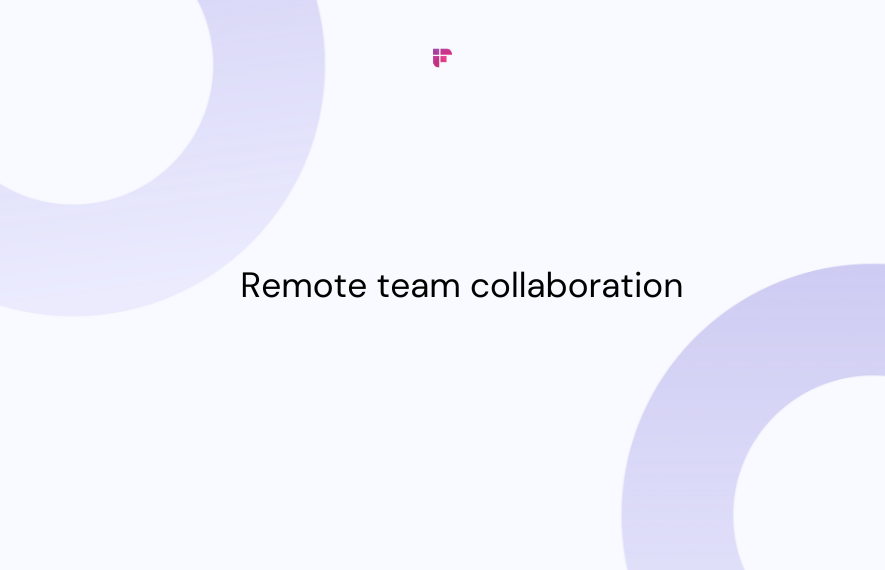In the post-COVID era, we have witnessed a surge in the number of companies going remote. Due to lockdown restrictions, employees switched to remote working. When things are slowly getting back to track, everybody is curious about the remote work trends for 2021.
The question remains: What will be the future of remote work?
Remote work is not an entirely new concept; it’s been there for quite some time. A survey suggests that the number of employees working remotely at least once a week has increased by 400% since 2010. However, the remote work trend accelerated due to the coronavirus pandemic when businesses had to go remote instead of getting close.
Even the tech giants followed the directives from authorities to contain the spread. Google, Amazon, Microsoft, and Twitter have asked most of their employees to work from their homes. This was a welcome move by the employees as it gave them flexibility in work. A popular remote work trend reveals that more than half of the full-time employees want to choose remote working.
Benefits and Challenges of Remote Work

Let’s understand the benefits of remote work to understand why employees prefer to work remotely from their favorite place. And then uncover the challenges of working remotely.
Benefits of Remote Work:
- Avoid the Tedious Commute: Nobody likes to get stuck in hour-long traffic and bear the endless car honks. With remote work, you can reduce commute stress, which increases your efficiency.
- Set up your Office Wherever you Like: Work from your home or anywhere else you like wearing pajamas or shorts. You are free to set up your virtual office near the coasts of Hawaii or on the mountains.
- Global Opportunities: There are no boundaries in remote work. A candidate can work for any company from around the world. Remote setup also allows recruiters to perform remote hiring of talents from anywhere globally without worrying about the relocation package.
- High Productivity: Working from your home gives your mental peace. No commute to work, work-life balance, and healthy food provide an employee with all the energy he needs to stay focused and productive.
- Flexible Work Hours: A significant advantage of remote work is fewer restrictions on work hours. You can work from home during the time you feel the most productive. You can also take breaks to stay refreshed during work hours.
Challenges of Remote Work
- Communication: Communication between the teams can be a challenge in remote working. This is where technology plays a vital role. Using productivity or work from home apps can reduce your resistance to communication.
- Distractions: It becomes easy to give in to distractions when you are working from home. Doing daily chores, washing dishes, social media, and watching your favorite TV shows can eventually eat up your time. The secret to staying focused while working remotely is building a schedule and sticking to it.
- Overwork: Well, it turns out you save much time in remote working only if you manage your time well. Otherwise, procrastination can crawl up in your routine, and you may have to work extra hours to catch the deadlines. In fact, 23% of the remote workers agreed to work more than they would work on-site.
Remote Work Trends For 2021: The Future of Remote Work
After understanding the benefits of remote working, these questions pops up:
Is remote work here to stay?
What are the remote work trends of 2021?
In short, what will be the future of remote work?
To answer this, let’s look at the different emerging remote work trends and how they will affect the businesses.
1. Flexible Work Hours will be a Preference.
Ever since 2015, the number of remote work setups has increased by 400%. Now, every working professional is ready to trade a long-term job for a flexible one.
This shows us that most people are prioritizing freedom from old restrictions. In fact, around 63% of people said that the typical 8-hour workday would eventually disappear.

Early remote work trends indicate that the future will see a surge in short-term employees and freelancers. This is why the remote workforce in America will rise by 43% by the end of 2020.
The change in the workers’ preference will affect the company’s policies, especially the HR department. Organizations will need to emphasize remote hiring, virtual onboarding, communication systems, and remote employee management.
2. Evolution in Human Resources
Like remote work, automation is the future. With companies going remote, the whole hiring process will go virtual. Technology will play a significant role in recruiting because it can increase the productivity of the HR department. For instance, chatbots can trim down the support cost (internal and external) by 30%.
Moreover, the different functions of the HR department will be fully or partially automated. From hiring and training to data analysis, HR automation software will be the new time savers.
It will automatically sort and filter out candidates based on the requirements of the company. Further, companies can use effective LMS to facilitate employee onboarding and orientation.
Companies like AT&T, Procter, and Gamble, and CapitalOne are already using automated software for hiring.
3. Collaboration will Save Us
The success of remote work depends on the effectiveness of communication and collaboration. These are ten times more important if you’re working remotely or managing a remote team.

Thus, it will be crucial to create a digital version of meeting rooms and coffee space where team members can interact and discuss. That’s why we have seen growth in users of conferencing tools like Google Meet, Zoom, Slack, etc., during the pandemic.
VoIP, the underlying technology of all the collaboration tools, will likely have 3 billion users in 2021. That’s 40% of the entire world population.
4. The Crucial Role of Cybersecurity
Remote means everything on the internet. Be it communication, collaboration, hiring, and operations; the whole system lives on the cloud. Hijack of a company's sensitive data during transit to the server can incur huge losses to companies.
That’s why the security of online data becomes the utmost priority of any organization. Thankfully, organizations are recognizing the loophole and investing heavily in the cybersecurity infrastructure.
For this reason, the cybersecurity market is expected to grow to $248.26 billion by 2023. This trend of remote working is catching the attention of the companies towards a critical issue.
5. Preference to Specialists
Specialists are preferred for remote work, whereas generalists are the top choice for on-site work, as per experts. Companies like to hire freelancers or short-term workers based on their expertise in their niche. On the other hand, freelancers are always looking for ways to get deep into their specialized area.
For the companies, this should be kept in mind while hiring. The more profound the specialization, the higher the pay. This remote work trend also suggests that workers are always keen to work in a company that uses their niche skills.
6. Work-Life Balance
Mental health is becoming a priority now. Still, 43% of the remote employees are likely to work more than a standard 40 hour per week system. For companies, this is a valuable thing as more hours means more tasks getting done. But for employees, an inefficient system.

The reason for that stat is the failure to balance life and work. When you work from home, boundaries between the professional and personal world seems to blur.
With the remote work trend of 2021, employees would take this wake-up call sincerely. For companies, it means equipping systems to measure an employee’s output, such as a time tracking system for remote workers, similar to an on-site arrangement.
7. Gen Z will Carry on Remote Work Trend
Generation Z has already joined the global workforce. They are the generation who have grown up with innovative technology around them. Gen Z has been observing the latest technology trend while learning from the millennials.
It turns out; Gen Z has high expectations and demand from the companies.
The benefits that the millennials had are now a requisite for the Gen Z workforce. And remote work is one of them. That’s why more than 60% of the Gen Z workers prioritize remote work and getting feedback from their managers. For companies, this means that their policies will get affected by how the new generation of workers approach work.
8. Workforce Diversification:
Most of us are already familiar with gender inequalities at the workplace. Remote work trends 2021 makes this scenario even more inadequate.
For instance, Zapier found that around 40% of the females are not allowed to work remotely in contrast to only 25% of the men. What this means is that companies are missing out on the high-valued skills of women.
In the 21st century, companies will finally realize what the women workforce can achieve in business with the widespread remote work culture. We will witness companies hiring a diverse workforce to create an inclusive culture. It will further allow breaking the barrier of biases of gender, race, ethnicity, and orientation.
9. Retirement and Remote Work:
Once retired, you are officially out of an organization. That’s what current prevalence suggests. Well, not anymore. With the growing trend for remote work, baby boomers will be able to fill the void in their life post-retirement with their passion.
Life expectancy and quality of life have increased to nearly three years from 2007 to 2017. From 48 in 1950 to over 72 after 2017, life expectancy showed a massive rise. Now, retirees are searching for activities they can do. And it’s not all about money; older people need to be socially active to remain mentally fit.
Remote work is going to be insanely beneficial for these people. It will allow them to be a coach, mentor, or consultant to the new workforce. They can work from their comfortable space while being with their loved ones. Moreover, they can invest their time in things they are passionate about.
10. Remote Work is Here to Stay Post-Pandemic
The pandemic has accelerated the evolution of the business landscape. Now, it’s more than just about the essential things. The ongoing drift towards the implementation of remote work is more than just a sprint.
It’s a marathon for the future. And if companies decide to switch to on-site work culture, they should be ready to have strong reasons for the conduct.
The reason for the emerging remote work trends of the future is two-fold:
- Companies can save $11,000 a year per employee if they opt for remote work. Unlike on-site workspaces, organizations don’t need to pay for the building, water, power, property insurance, office supplies, and many more.
- Remote work is good for the environment too. This flexible system can reduce greenhouse gas emissions by 54 million tons a year. We’ve already seen nature coming back to its glory during the lockdown.
The Future is Here
We just need to identify it. Companies, as well as employees, would have to keep pace with the ever-changing work landscape. It will be a challenge for workers to stay connected and productive while working in a company.
Continuous online meetings and discussions can overwhelm anyone. Today, being productive is no more a choice but a necessity in remote work.
Fireflies.ai is built with a vision to increase every remote worker’s efficiency, be it an entrepreneur or employee.
The most precious resource in remote culture is time. And Fireflies saves your time by recording and transcribing your meetings automatically so you can search across the meeting notes whenever you need them.







